– Valeria Arza* and Agustina Colonna**
*CONICET and CENIT/UNSAM; ** CENIT/UNSAM
18 December 2019
Chagas is an infectious disease mostly present in Latin American countries. Although the Chagas problem involves multiple socio-economic dimensions, we see that most science technology and innovation (STI) policies concentrate on the medical aspect of the disease. Additionally, research is organized in a traditional, rather closed and secretive way of producing scientific knowledge. We suggest that open and collaborative initiatives, through a more integral perspective, could be a promising opportunity to tackle this disease.
Chagas is an infectious disease which affects 6 million people and causes over 14,000 deaths each year worldwide (WHO 2018). Despite these significant numbers, it should not come as a surprise if you have never heard of Chagas. Chagas is mostly found in endemic areas in Latin American countries and is considered one of the Neglected Tropical Diseases by the World Health Organization. It is considered “neglected” because although there are not yet satisfactory solutions to Chagas, it has received little attention by the international scientific and policy community for many years, despite being an important health burden in many low- and middle-income countries.
There are three forms of transmission: vectorial transmission through an insect called vinchuca (or kissing bug in English), vertical transmission through mother-fetus infection, and through blood transfusion. Although there are two drugs to treat infected patients, these are effective only during the acute phase, which only lasts 8 to 12 weeks, when the disease is asymptomatic. Thus, early diagnosis is extremely important.
However, we cannot limit ourselves to this medical description of Chagas and must be aware that it is a very complex and multidimensional problem, as are most health issues. In this blog, we explore the multidimensional nature of Chagas by showing how it impinges on various Sustainable Development Goals (SDGs).
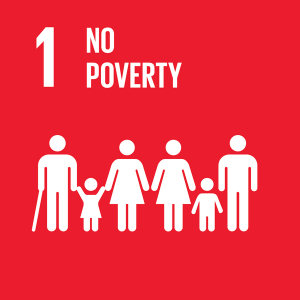
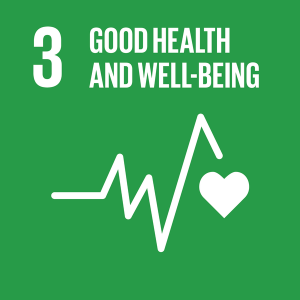
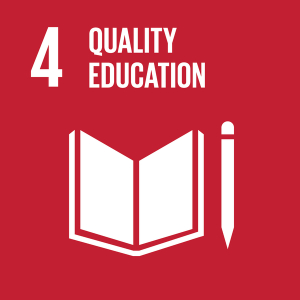
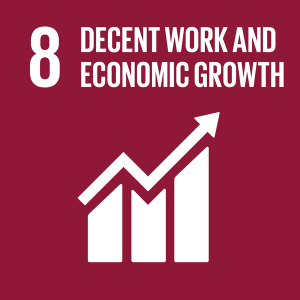
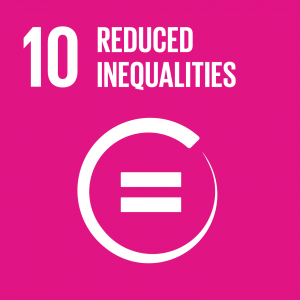
The most obvious relationship is with SDG 3, which focuses on health and wellbeing. But Chagas is also closely linked to inclusive education and dissemination of information (SDG 4), as these are essential to encourage prevention, diagnosis, treatment and to eliminate stigmatisation against people suffering the disease[1]. This stigmatization mistakenly associates the disease solely to poor livelihoods (SDGs 1 and 10) and can lead to discriminatory practices and to unfairly blame these groups for the disease burden. This stigma also includes xenophobic discourses against immigrants, and is visible in labour markets (SDG 8), where infected people can be unfairly marginalized from the working environment.
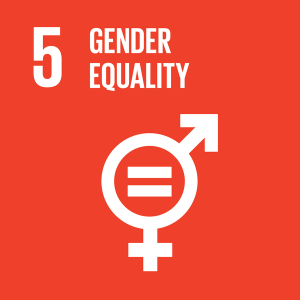
Women (SDG 5) have a central role in this issue. Currently, the main form of transmission of Chagas in Latin America is vertical, through mother-fetus infection. Preventing vertical transmission is increasingly important, which requires timely controls during pregnancy, to treat the mother if necessary. Additionally, diagnosis in newborns is extremely important to increase the effectiveness of treatment. To achieve reliable results, further controls of newborns are required 10 months after the first test for the disease, but returning for the second diagnosis may prove to be a challenge due to lack of health and transport facilities in some areas. Unfortunately, the importance of these prevention methods has given rise to unfair treatment against women, as they are held responsible if their children get infected.
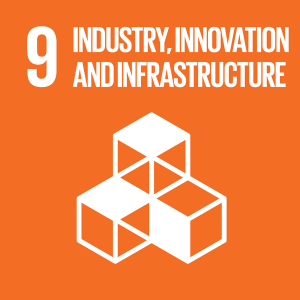
Adding to multidimensionality, Chagas also relates to access to infrastructure (SDG 9), such as roads and transport services, which can facilitate access to health institutions both for treatment and for early diagnosis. Additionally, SDG 9 is also important in relation to housing, because the kissing bug tends to settle in houses made of abode (mud brick).
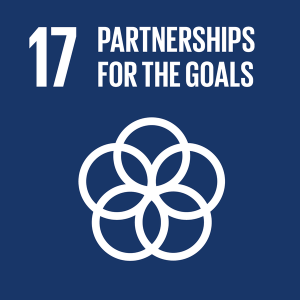
Finally, to control the disease, international cooperation and support to developing countries is essential (SDG 17). For example, in the 1990s, the most highly affected countries in Latin America, together with the Pan American Health Organization, cooperated successfully to reduce significantly the levels of vectorial transmission and to establish the mandatory control of blood banks.
Despite the various dimensions involved, when we analyze science, technology and innovation (STI) in relation to Chagas, we find a clear concentration in the health dimension (SDG 3), while other perspectives have received less attention from the research community. For instance, according to data from Dimensions[2], the number of publications and policy documents on Chagas in the field of Health and Medical Sciences in the past ten years was approximately 40 times greater than the number of publications in the fields of Social Sciences. Although this may seem expected for studies on an infectious disease (which is mainly a health issue), this relationship is only 8 to 1 in the case of Malaria. Hence, we can see the concentration on medical disciplines is particularly strong in Chagas research.
Thus, medical research seems to have been prioritized in the field of Chagas, while all other dimensions, such as education, policy, livelihoods, gender, etc., which would be mostly analyzed from a social science perspective, have received much less attention among the scientific community. Now we must ask ourselves, is it a problem that the social sciences dimensions are less prioritized? Do we really need more research on these other dimensions, or should we prioritize other activities besides research to have an impact in those fields?
In the particular case of Argentina, which ranks first in Latin America in terms of the number of people infected by Chagas, these imbalances are present in both research and policy. The country seems to have a wide range of public policies that contribute to finding solutions to Chagas. However, in practice, these policies present important gaps, leading to unmet societal needs and imbalances in the research agenda. For instance, the Ministry of Health has a National Chagas Programme which in theory coordinates most public policies carried out to control the disease, many of them oriented towards prevention and vectorial control. However, there are not many concrete actions currently taking place within this programme. As another example, the Parliament seems to consider the multiple dimensions of Chagas, reflected in the National Chagas Law (2007), which addresses many of the dimensions related to Chagas mentioned in the previous paragraphs. Nevertheless, the potential benefits of the law are not seen by citizens, as it is currently not enforced. Finally, to illustrate the consequences on the research agenda, research in Argentina is largely supported by the State. However, research agendas are mostly autonomously defined by the research communities which tend to concentrate on specific dimensions (as seen above). For instance, the largest initiative studying the educational aspects of Chagas in Argentina has scarce funding and depends on the voluntary commitment of participants.
There is still a long road ahead in the fight against Chagas. We believe that the scientific endeavour would be more effective through a more open and collaborative approach in which diverse perspectives and actors take part in the process[3]. Promoting open access to research data and other outputs largely expands potential lines of enquiry[4] and encourages diversity which can drive up creativity and performance[5]. In addition, by documenting and openly sharing the research processes and outputs, transparency is enhanced, as are research quality and the public perception of science[6]. Additionally, since results in different research stages are shared, duplication is reduced[7]. These efficiency gains, in turn, may reduce the cost of finding solutions to Chagas. Particularly, in the case of drugs, vaccines, diagnosis kits and other outputs subject to intellectual property rights, open licenses may also reduce prices, with an expected positive effect on both access to treatment and the public health budget[8]. This could be the most conducive alternative to traditional research in the context of Neglected Diseases which are unprofitable pharmaceutical markets. Yet, public funding opportunities in Chagas mainly favour more traditional and closed ways of doing research.
In this STRINGS project, we aim to identify imbalances in Chagas-related STI, both in terms of the dimensions attended by the research and policy community, and the methods used to tackle all relevant issues, from research to implementation. We look to study how these imbalances affect contribution of STI towards all the different SDGs involved in this complex problem. In particular, we will analyse whether open science research initiatives can make a difference to the contribution of STI towards meeting the SDGs related to Chagas.
Exploring different alternatives in Chagas policy and research may be the key to progress in this field. Open and collaborative science embodies many promising elements which can allow us to address the priority needs of society and help end the health burden of Chagas. We expect our study to provide useful evidence in this area for researchers and policymakers to understand how STI can best contribute to meeting the SDGs in the Chagas field.
Footnotes
[1] Sanmartino M, Amieva C, Balsalobre A, Carrillo A, Marti G, Medone P, et al. Hablamos de Chagas: aportes para re-pensar la problemática con una mirada integral. Ciudad Autónoma de Buenos Aires: CONICET—Consejo Nacional de Investigaciones Científicas y Técnicas; 2015.
[2] https://app.dimensions.ai/discover/publication
[3] V. Stodden, Open science: Policy implications for the evolving phenomenon of user-led scientific innovation, Journal of Science Communication 9(1) (2010), 1–8.
[4] M. Nielsen, Reinventing Discovery: The New Era of Networked Science, Princeton University Press, New Jersey, 2012
[5] Jeppensen and K. Lakhani, Marginality and problem-solving effectiveness in broadcast search, Organization Science 21(5) (2010), 1016–1033. doi:10.1287/orsc.1090.0491.
[6] Franzoni, C., & Sauermann, H. (2014). Crowd science: The organization of scientific research in open collaborative projects. Research policy, 43(1), 1-20.
[7] Osterath, B. (2013). Drug research: thinking inside the Malaria Box, Deutsche Welle. Retrieved from http://dw.com/p/1AKrl
[8] Balasegaram M, Kolb P, McKew J, Menon J, Olliaro P, Sablinski T, Thomas Z, Todd M et al. (2017) An open source pharma roadmap. PLoS Med 14(4): e1002276. https://doi.org/10.1371/journal.pmed.1002276
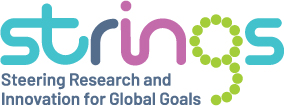
Leave A Comment